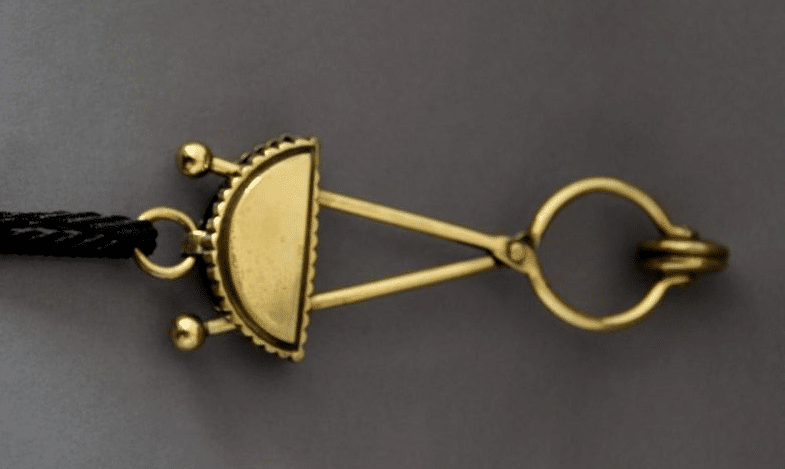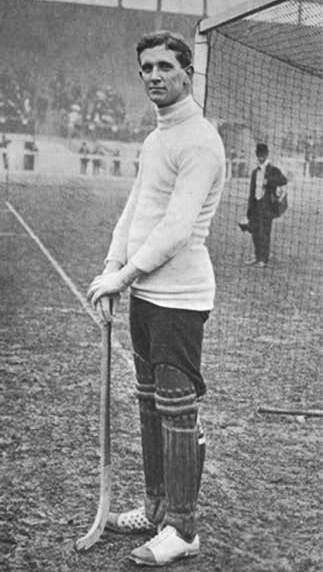By Christabel Russell Vick
I grew up knowing that the Wembley hockey international was the biggest fixture in the women’s hockey calendar. When I talked to my mother (Mary Russell Vick) about her hockey career, I was amazed to discover that these matches at the iconic Wembley Stadium were entirely down to my grandfather, Godfrey Russell Vick, her father-in-law. So how did the story unfold?
England Women’s international hockey matches had first been played in 1896 and by the 1920s they were attracting large crowds. In 1921 a match held in Old Deer Park, Richmond was attended by 1,809 spectators. The All England Women’s Hockey Association (AEWHA) had encouraged the tradition that one of the international matches every year became the ‘club and school’ day out. This proved very successful and after the 1933 match at Merton Abbey when spectators were four or five deep around the ropes and the stand was full, they moved to The Oval in 1935. This held 10,000 but crowds continued to grow and in 1948 the AEWHA Annual General Meeting minutes record that it was no longer considered a suitable venue.
My mother was playing for England in the 1949 match at The Oval and Godfrey went to watch. He spoke to the President of the AEWHA, Helen Armfield, and asked why the women were not playing at Wembley. On hearing that the stadium would not have them Godfrey railed at the ridiculousness of the situation and said he would ring Sir Arthur Elvin (formerly the owner and then Chairman of the Wembley company) and tell him so. This he duly did – Godfrey presumably knew him from his socialising in London where he was a barrister – and in 1951 the first game took place. The AEWHA did have to guarantee a crowd of 20,000, but thanks to the support of British Rail who agreed to run special trains into Wembley Central, there were about 30,000 spectators.
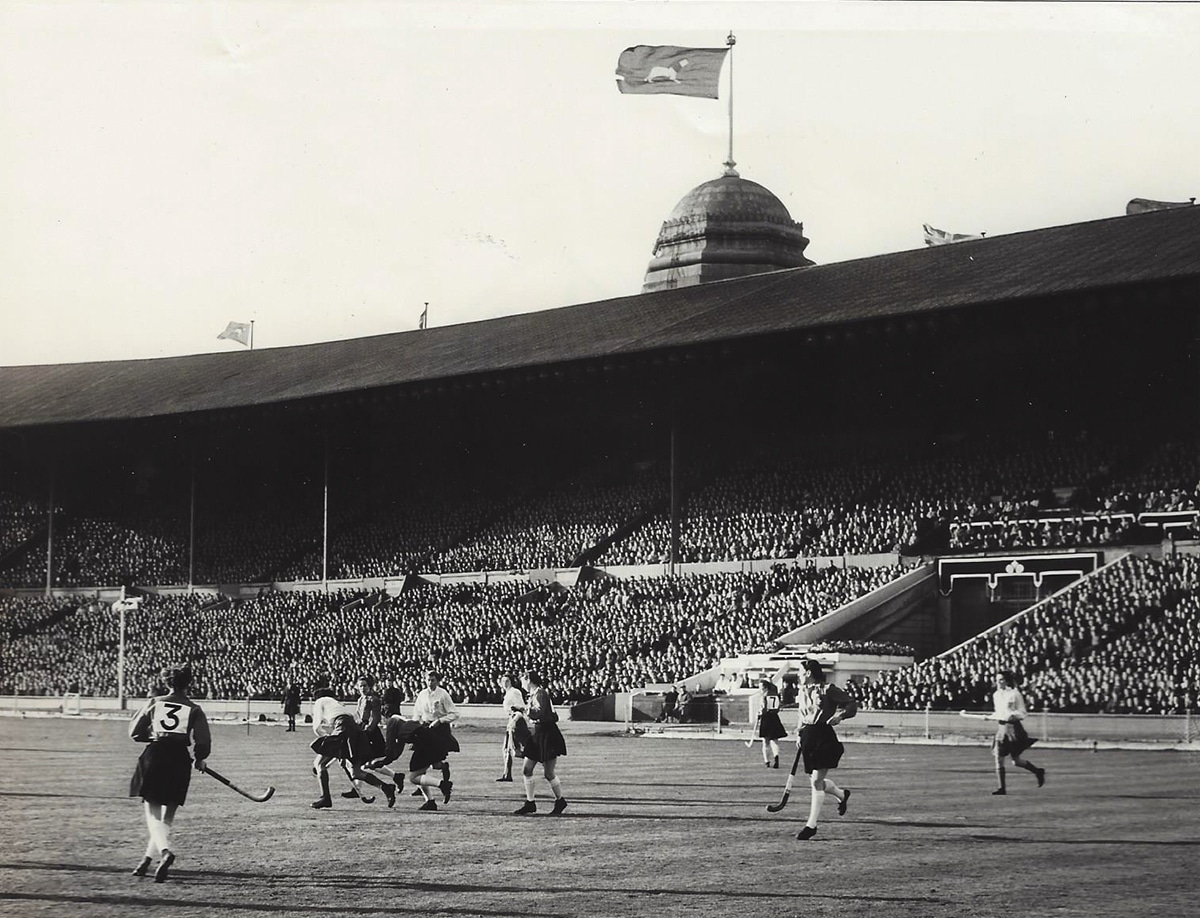 |
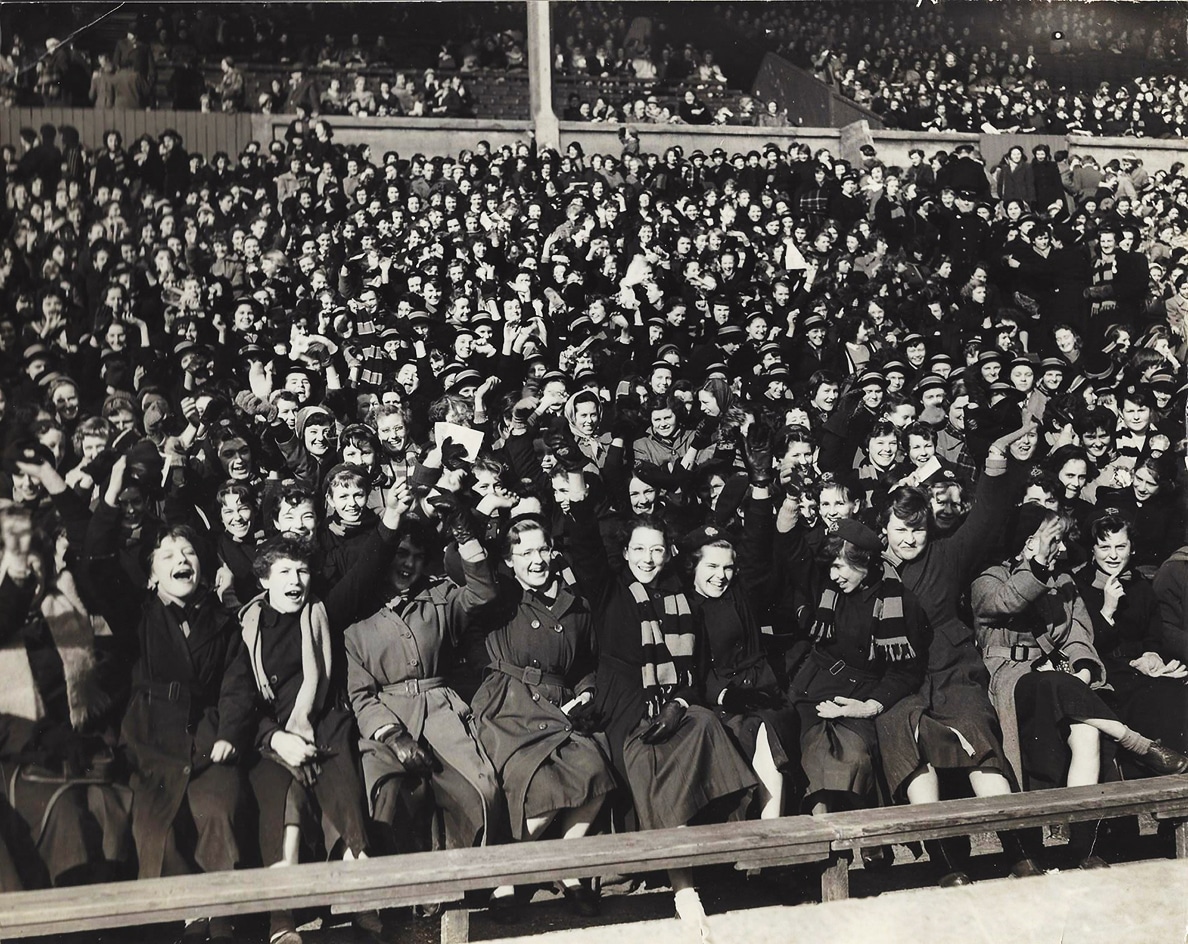 |
|
| An action shot and a close up of the Wembley crowd, 1955. Images from the Marjorie Pollard collection, The Hockey Museum. |
||
It was realised that many of the players selected for the 1951 match did not know each other and so, to ensure they played their best in such a large arena, a practise match was arranged for the team at the end of February. Now better prepared, the England team played in the first match on Saturday 3 March 1951. The commentary ran as follows: “The trouble with England is that they are such slow starters … Oh they have got a goal” – Mary Russell Vick had scored after nine seconds. England went on to beat Ireland 6-1. Godfrey was of course present at the match and was asked to the dinner afterwards to respond to the ‘toast to the guests’ given by the venerable Marjorie Pollard.
So began an annual event which lasted for 41 years. Mary also played in the 1952 and 1953 matches before retiring with over 30 international caps and having scored 70 goals.
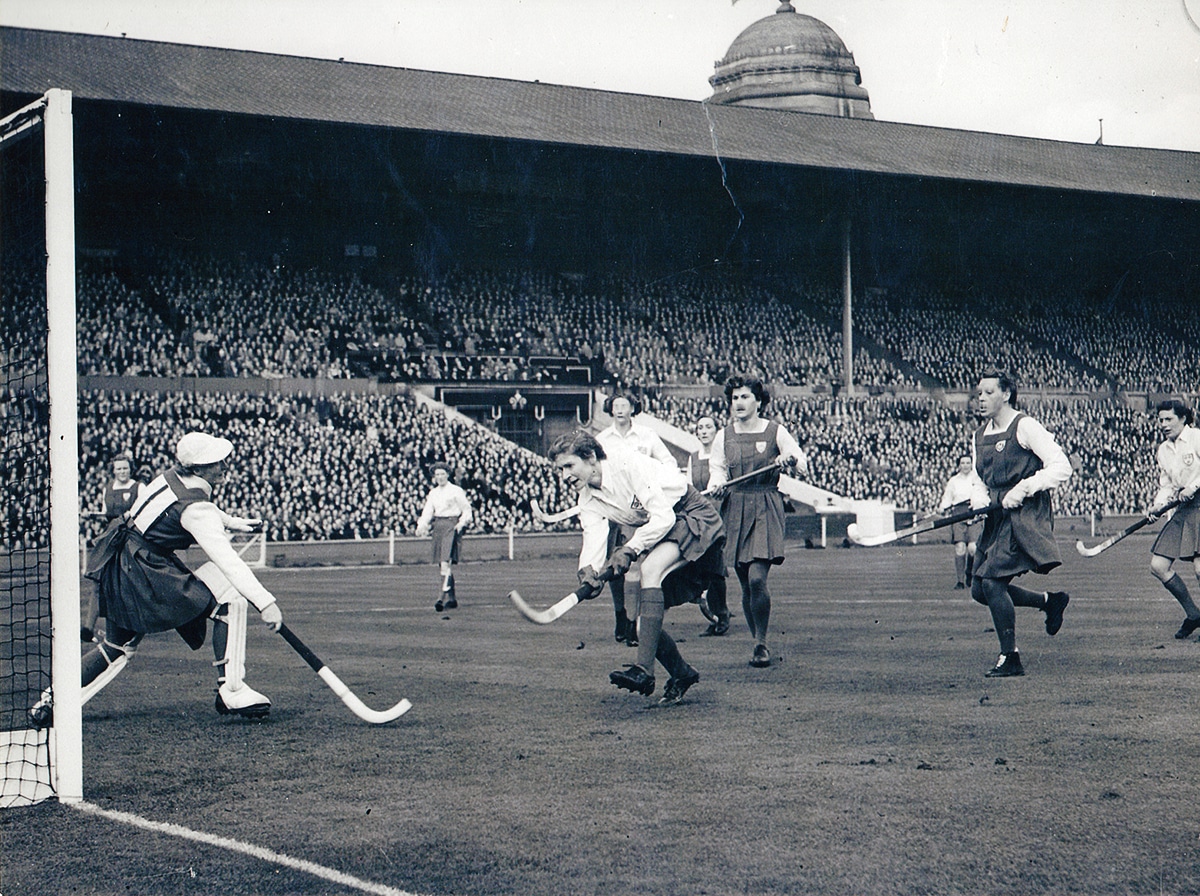 |
| Mary Ruseel Vick in action at Wembley during the early 1950s |
That could have been the end of the story but my mother was very much brought up to give back and so continued to be involved on an administrative basis. She represented the South on the All England coaching sub-committee and in 1970 became Chair of that committee which meant she was also a member of the AEWHA Executive Committee. She was lobbied to become a Vice-president in 1971 and then in 1976 became President of AEWHA.
Among other things, this put her in charge of organising the Wembley matches, which she did for the next ten years. By then we always had an annual trip as a family to Wembley. I think my first visit was in 1965. I must admit the thrill of seeing my mother on the pitch escorting the guest of honour gave me tremendous pride. Of course, when the Queen was guest of honour in 1981 – that was a day never to forget. Especially singing ‘God Save the Queen’ to the actual Queen!
 |
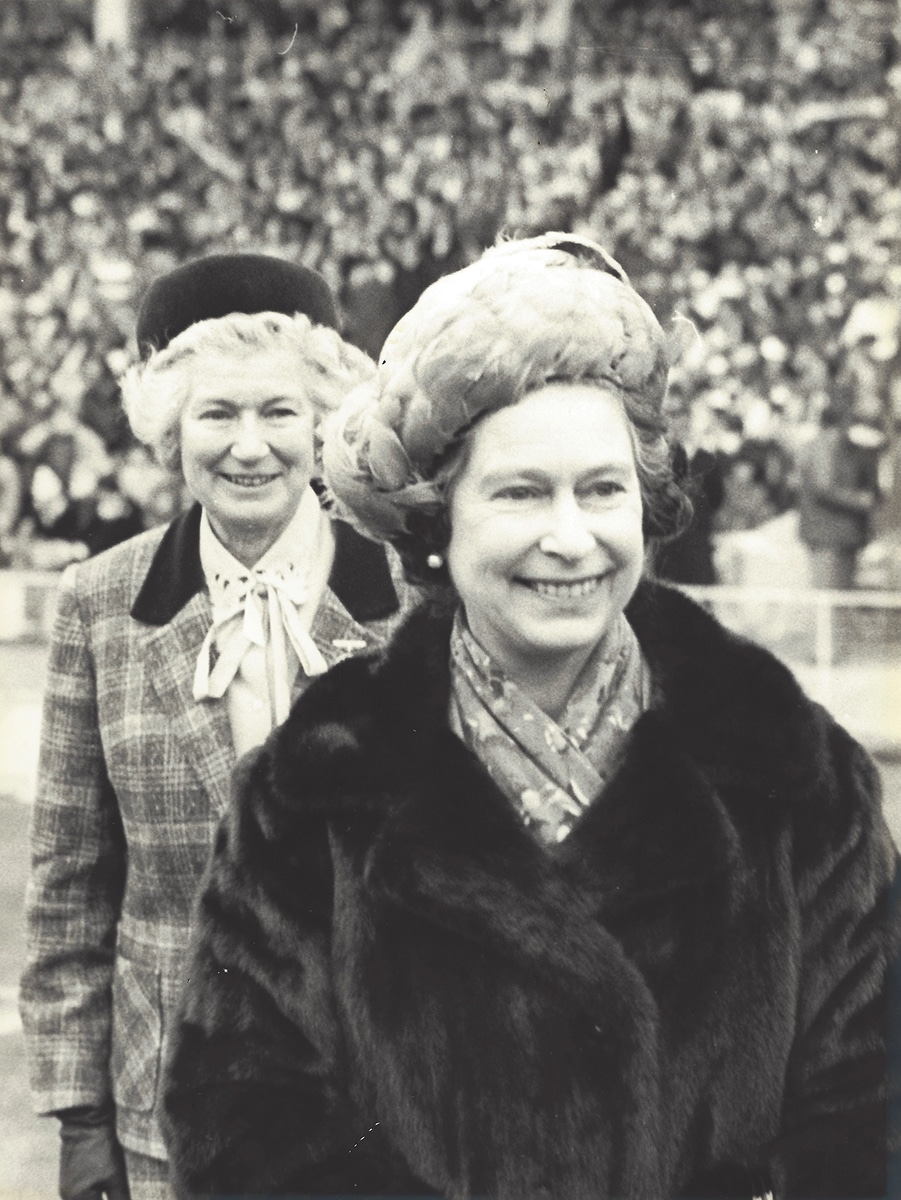 |
|
| Her Majesty the Queen tours Wembley Stadium before the England vs Wales hockey match in 1981. | AEWHA President Mary Russell Vick with Her Majesty Queen Elizabeth II in 1981. |
It is only now that I realise how extraordinary the whole event was. It was the schoolgirls’ day out at Wembley and many were delighted to keep up with their brothers who went to football there. In total I went about 20 times. The noise had to be heard to be believed. Apparently, they once tested the sound level which showed all the screaming schoolgirls had a higher decibel count than Concorde (the fastest aeroplane at that time). I loved the community singing before the match with a radio DJ, which gave everyone a chance to let off some steam and wave banners.
For players, it was a highlight of their career. Many of them had been as spectators with their schools which enhanced their determination to play for England. For umpires too, it was a privilege to be asked but such a different experience. The crowd noise was such that the players could not hear the whistle. The highest crowd figures were 68,000 in 1976, when England beat Scotland 3-0. For many club hockey players, the trip to Wembley also became the annual day out, arriving early, meeting up with old friends and having picnics in the car park. Many were also supporting one or more of the players from their clubs who were in the England team.
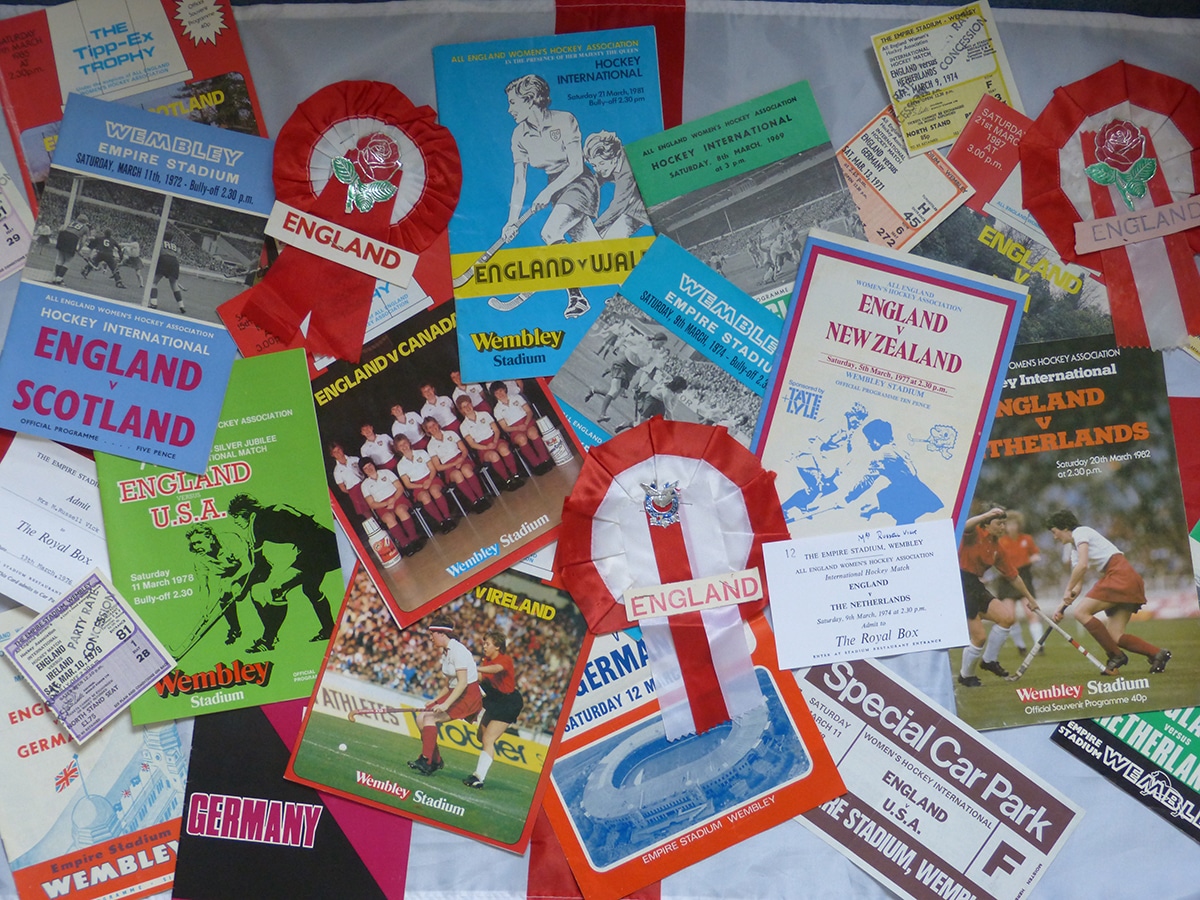 |
| Wembley programmes and homemade rossettes from Christabel’s personal collection. |
When I joined The Hockey Museum as a volunteer, I was honoured to be asked to compile a book about the Wembley era using the extensive research already done by Nan Williams (herself a former England international and Wembley player). I had a wonderful time putting together The Magic of Wembley, a book celebrating the Wembley years. It tells the story of the move to Wembley, the memories of players, spectators and administrators, the day the Queen came, the changing face of the matches over the years and the Wembley legacy – the unique story of a pioneering and iconic era for women’s sport and for hockey.
The book is available from The Hockey Museum website. For more information click here. To place an order, please click here (to email) or click through to THM’s website contact form and select “THM Shop” from the dropdown menu.
For more great hockey history stories, sign up to THM Mailing List using this quick and easy online form.

